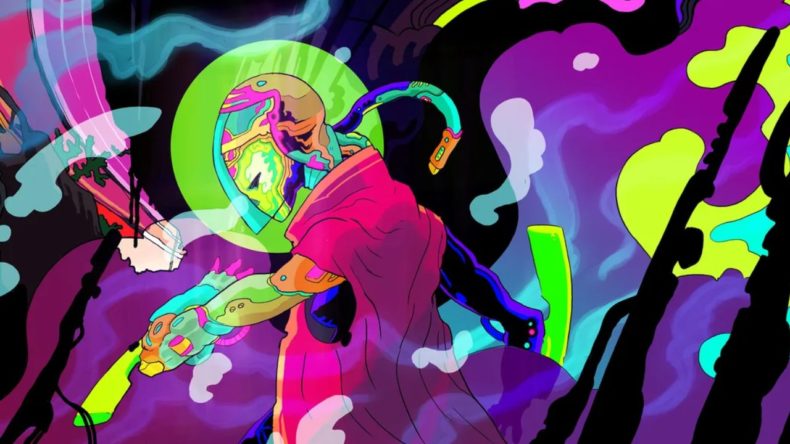February 13, 2024
There’s a fairly obvious but often underused tactic to make whatever you’re creating stand out in a crowd. It’s something perfected by artists like Lady Gaga or David Bowie. What you do, right, is you take whatever it is you’re creating, grab hold of all its metaphorical dials and levers, and push them all up to 11. Developer Hadoque has certainly heard of the method, given the undeniable 11-out-of-10-ness of their debut title, Ultros.
It’s a roguelike, Dead Cells-style Metroidvania that doesn’t seem overly concerned whether you know where it’s going as long as you’re strapped in. Ultros is set in a huge cosmic womb known as the Sarcophagus, wherein a gigantic entity called Ultros is about to be birthed. For some reason, this is a bad thing, and so your unnamed protagonist wakes up with one mission and probably about a million questions. She is to prevent the birth of Ultros no matter the cost.
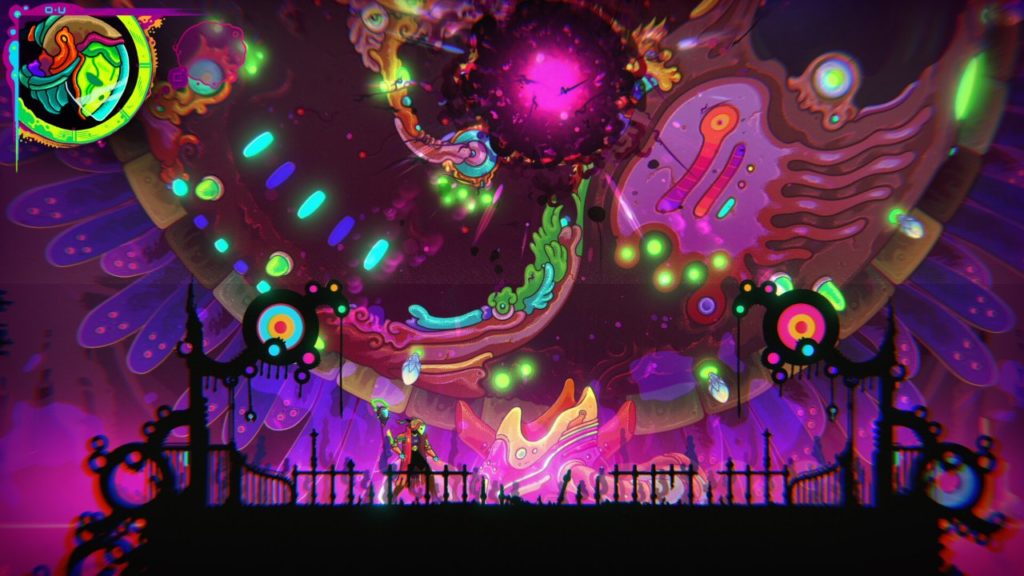
Ultros could quite easily have been gross, too. It could have been a disgusting brown game smeared with grime and filth and the concept would have still worked. But Hadoque instead went as far as possible in the opposite direction, allowing Hotline Miami artist El Huervo to create a psychedelic alien world that’s so distractingly bright and colourful that you probably won’t even notice how many background art assets resemble hoo-hoos and ha-has.
Regardless, your goal here is to follow the objectives, decipher the random shite the NPCs tell you, read reams of barely coherent flavour text off everything you pick up and generally look incredibly, dizzyingly good while doing it.
The action is par for the course for a Metroidvania, but with a few interesting deviations. For a start, every time you defeat one of the seven bosses, you’ll be required to also slay one of the mystical Shamen currently feeding Ultros with life. Doing so will summon you back towards the centre of the Sarcophagus where you’ll be absorbed, and the cycle will begin anew. What this means is you’ll wake up again having lost everything you found and unlocked, and will need to find it and unlock it again. Only your map progress will persist, but new areas will open up thanks to the powers you acquired in the previous cycle.
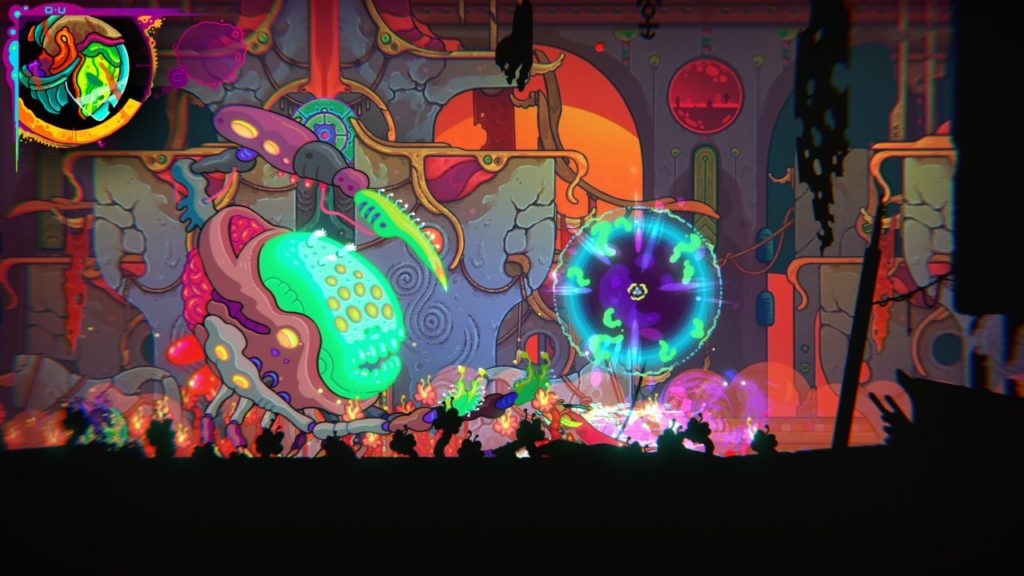
Early on you find a device called an Extractor, which is a little droid attached to you by what looks like an umbilical cord. Initially it only grants a double jump, but you can then upgrade the Extractor with multiple functions such as the ability to dig into the soil or saw through razor-sharp brambles. When you find your Extractor in each new cycle, it will retain its previous functions.
Themes of birth, death and rebirth ripple through Ultros with every pop of colour or glimmer of light. A mysterious Gardner acts as a guide, presenting you with seeds you can plant to grow various flowers and trees that will either open up new pathways or sprout fruit that you can eat. Eating said fruit, along with body parts sliced out of your enemies, refills your health and imbues you with colour-coded XP for unlocking new abilities.
That’s right, I said “eating body parts”. Combat in Ultros is fluid and frenetic, but there’s art behind it, too. Simply smashing enemies to pulp will only yield bruised or battered morsels that grant little benefit. In order to get the juicy stuff, you must vary your attacks, employ perfect dodges and counterattacks, juggle enemies or even launch them at one another. Different skills allow you to do things like drop-kick enemies, or sneak up behind them; some increase your combos. These skills are also forgotten when a new cycle begins, though you can use a mycelium to lock a skill across new starts.
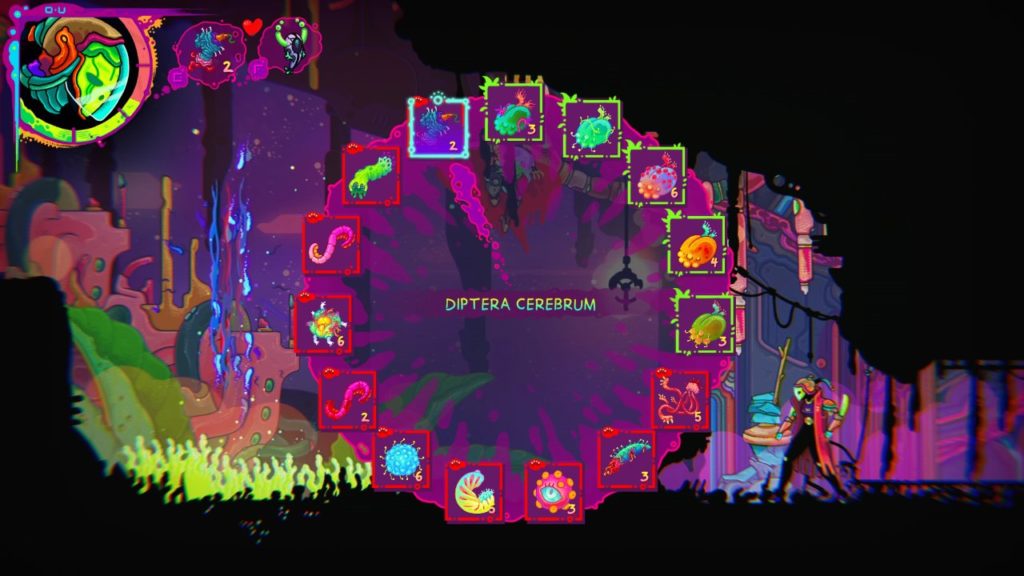
If there’s a downside to Ultros’ unique aesthetic it’s that the overall sameyness of each area begins to grate when you’re constantly backtracking to find the next route – especially as each new cycle sees you go through the same motions each time. Find the sword, find the Extractor, etc. NPC dialogue and reactions change, and of course the story continues, but visually it can become a little tiresome. It’s not always entirely clear where you’re meant to be going next, and I found some powers required a little experimentation because the game doesn’t exactly heap the information on. As fast travel doesn’t open until quite far into the story, you’ll be running back and forth a lot.
There’s a deliberate obtuseness to Ultros that some will get a kick out of and some won’t. Its lofty cosmic posturing is not without humour though, which certainly balances out some of the weirdness. Combat flow and indeed movement around the world is slick and responsive, and there’s a joy to be found in simply navigating the chromatic caverns of the Sarcophagus as you strive to unravel its many mysteries.
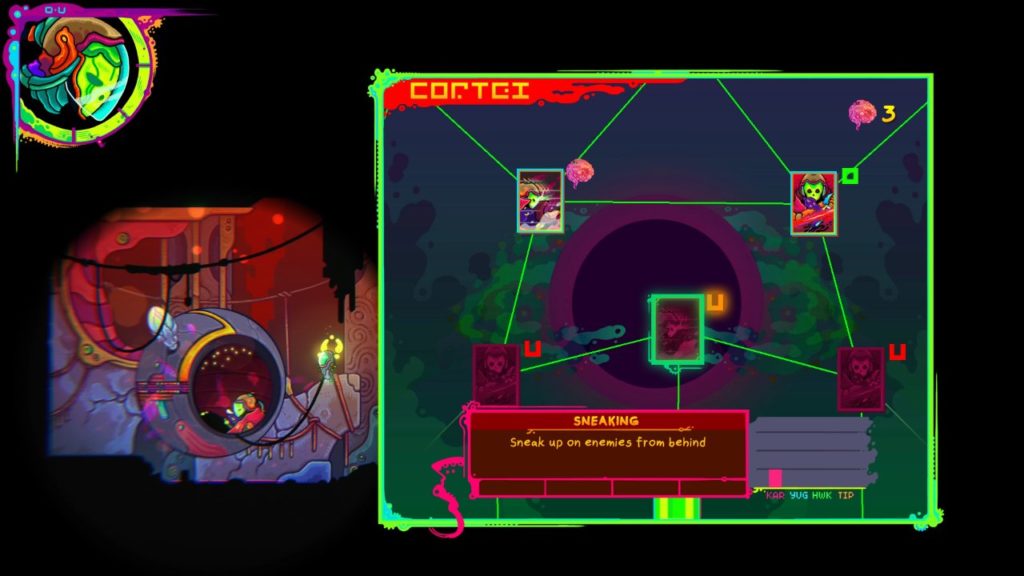
With Metroidvanias in the midst of a kind of renaissance, Ultros does enough to earn its place, but perhaps does so more on the merits of its appearance than content. Beyond the kaleidoscopic realms of its world, it doesn’t do much that feels all that new or bold. It follows the Metroidvania template pretty closely, to the point that the roguelike element feels more like a narrative device than a necessary mechanic. What sets it apart is the XP system, the aesthetic of its alien landscapes and the barely restrained subtext that permeates the entire experience. It’s like an H.R. Giger exhibit as reimagined by the cast of Sesame Street.
But whether it’s fresh enough or not is kind of mute when Ultros looks this good and feels this good to play. Expect to be compelled, bewildered, and visually seduced by its undeniable beauty, but don’t expect to be too surprised by what simmers beneath the surface.
Looks incredible
Smooth, slick combat
Interesting gameplay loop
Metroidvania progression is nothing new
A little too obtuse for its own good
Expect to be confused, bewildered, and visually seduced by Ultros, but don't expect to be too surprised by what simmers beneath the surface.


